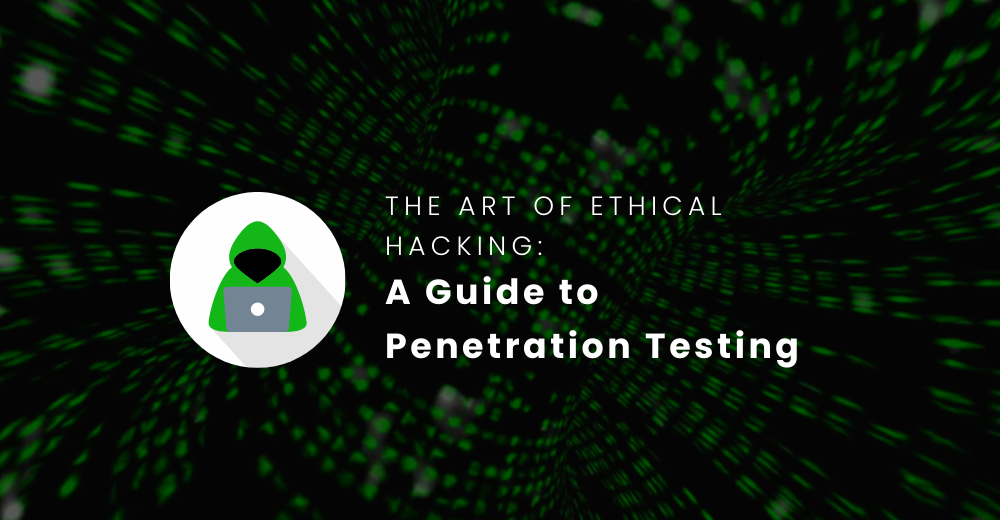In this day and age where digital information drives everything, cyberattacks are extremely widespread and hackers are continuously hunting for new weaknesses to exploit sensitive data for harmful reasons. Ethical hacking, often known as penetration testing, is an important security testing approach for safeguarding businesses against these threats.
This proactive security testing service replicates real-world invasions to identify shortcomings in the digital security of any organization, allowing them to update their defenses before a breach takes place. The digital world is always under attack, with over 2,200 cyberattacks occurring each day. This corresponds to more than 800,000 potential victims per year, emphasizing the vital necessity for reliable penetration testing.
Let’s start with the
Definition Of Ethical Hacking
Ethical hacking, often known as penetration testing, is the authorized & controlled method for replicating cyberattacks on digital systems, networks, or applications. The objective is to discover potential security weaknesses that malicious hackers may exploit. Unlike actual cybercriminals, ethical hackers work with the organization and get their authorization to uncover these weaknesses, allowing them to address such issues early.
Ethical hackers follow a disciplined approach and use a combination of security testing tools & techniques that simulate the actions of real-world attackers. By thinking like malicious actors, they assess the strength of an organization’s defenses and pinpoint potential entry points.
Benefits of Penetration Testing
In today’s rapidly evolving technological landscape, human errors still account for 88% of data breaches. This makes penetration testing even more of a necessity for organizations looking to protect themselves against cyberattacks.
Here are a few critical benefits that penetration testing offers:
- Using pen testing findings, you can ensure that your firm follows critical industry standards such as PCI DSS, HIPAA, and GDPR, reducing the risk of fines and penalties.
- Penetration testing identifies weaknesses in your systems, apps, and even staff security practices, allowing you to take action before attackers strike.
- Instead of making assumptions, evaluate the efficiency of your current security procedures. Pen testers provide relevant findings to help steer security expenditures and improvements.
- Discover flaws in your hardware, software, and human operations. Pen testing enables you to establish controls and select those that minimize the most significant risks.
- Penetration testing doesn’t just find flaws – it provides the roadmap to address them. Build a robust cybersecurity defense strategy for long-term success.
Different Types of Penetration Testing
Penetration testing targets various components of an organization’s digital and physical infrastructure to uncover vulnerabilities. Here are the primary types:
- Web Application Penetration Testing: Examines online applications and websites for vulnerabilities such as cross-site scripting (XSS), SQL injection, and failed authentication. This is critical for websites that process transactions or store sensitive information.
- Network Penetration Testing: Focuses on the organization’s network infrastructure, such as servers, routers, firewalls, and devices. It seeks to detect imperfections in network architecture, setup, or operation.
- Physical Penetration Testing: Involves simulating real-world attacks on an organization’s physical security perimeter. To find vulnerabilities in physical controls, testers attempt to break barriers such as security cameras, locks, and sensors.
- Wireless Network Penetration Testing: Evaluates the security of wireless networks (Wi-Fi) that link devices in an organization. This prevents data leakage and unauthorized access
Approaches to Penetration Testing
Penetration testing employs different strategies tailored to specific security needs. The amount of information provided to the tester about the target system determines the best approach:
- Black-Box Testing: The tester acts as a real-world attacker, starting with no knowledge of the system’s internal operations. This pinpoints weaknesses that outsiders can exploit, such as SQL injection attacks (XSS) in online applications or misconfigured network devices. This approach is suitable for conducting independent security audits or assessing how well a system can withstand an uninformed attack.
- White-Box Testing: This technique gives the tester entire access to internal information such as source code, architectural diagrams, and system designs. This enables for a thorough, code-level investigation, revealing vulnerabilities that may be hidden from the outside. Examples include logic problems in custom-built apps, insecure programming techniques, and coding standard compliance concerns.
- Gray-Box Testing: Striking a balance, testers have partial system knowledge, perhaps details about network layout or the use of third-party software components. This simulates an attacker who has done some reconnaissance and aims to exploit this inside information. Gray-box testing optimizes resource utilization and is well-suited for systems with a mix of custom and off-the-shelf elements.
However, the best approach depends on the testing goals, system complexity, and desired level of detail. Skilled penetration testers will strategically select the most effective approach, or even combine methods, to ensure the most comprehensive and realistic security assessment possible.
Hire QA Testers & Ethical Hackers to Stay on Top of Your Security Testing Strategies
In today’s digital landscape fraught with cyber threats, proactive security is more crucial than ever. Penetration testing, or ethical hacking, stands as a powerful tool to reveal vulnerabilities before malicious actors exploit them. By simulating attacks, skilled ethical hackers, along with thorough QA testing, help organizations strengthen their security posture, comply with regulations, and maintain the trust of their clients.
As technology evolves, so do the tools and techniques of attackers. That’s why it’s imperative to work with security testing experts who utilize security testing tools and always stay ahead of the curve. Look for security testing service providers who employ experienced penetration testers and QA specialists, offering in-depth expertise in web applications, networks, mobile platforms, and cloud security.
By prioritizing proactive security testing, organizations demonstrate their commitment to safeguarding sensitive data and protecting their business operations. Don’t wait for a breach to take action. Invest in comprehensive security testing solutions today by reaching out to a reputable provider of security testing services and hire QA testers to ensure the integrity of your systems.
